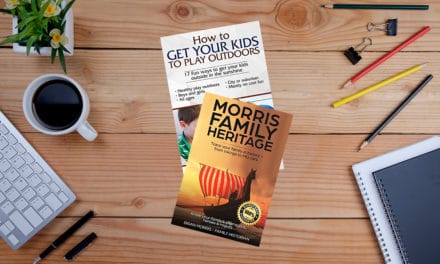Most writers, in fact, most people, think about writing a children’s book at some point in their careers. Sometimes they remember how much they loved books from childhood. Sometimes they see how books can open doors for kids and help them think in new ways. Sometimes they know that the right book at the right time can help a lonely child feel less alone.
If you want to write a children’s book, consider the following misconceptions and their corrections before you begin.
Mistake #1: Cluelessness
Misconception: “I haven’t read a children’s book in years, but they’re short and simple, right? How hard can it be to write one?”
The truth is children’s books are no easier to write than books for adults. Books for children demand all the elements that books for adults do: strong characterizations, fresh exciting plots, lots of action and clear, precise language, as well as the ability to see the world through a child’s eyes, mind and heart.
Picture books may be short, and they may appear deceptively simple, but they are one of the most difficult forms to master. Well-written picture books are works of art that demand an intuitive sense of child appeal, and like poetry, a firm command of language. Because the kind of book that would appeal to a 3-year-old is vastly different from one that appeals to a 10-year-old or a 14-year-old, books for children and teens come in many formats. It’s crucial to understand the field of children’s books, to know the various categories and formats and to read widely in the category you’re targeting.
Would your story work best as a picture book, an easy reader, an early chapter book or a middle-grade novel? Knowing the conventions and requirements of each format before you begin will save time when it comes to revising. Although these categories are fluid and the age levels are indicative rather than definitive, these are the standards devised and currently used by the publishing industry, librarians, educators and reviewers.
These are the major categories.
1. Baby/Toddler Books (ages 0-3)
As a child’s first books, these come in all shapes and sizes but usually have very few words per page. Unless you are an artist or have a brilliant idea that hasn’t been produced before, this market is hard to crack.
2. Picture Books (ages 2-8)
Text and pictures work together to tell a story. Picture books appear deceptively simple, but the best ones are beautifully compact works of art that work on many levels and help children grow emotionally and psychologically. A few picture books have no words at all, allowing the pictures to tell the story, and most are no longer than 1,000 words. Most picture books are 32 pages long, including the cover pages.
3. EZ Readers (ages 4-7)
Aimed at beginning readers, these books have limited vocabulary, large typeface, simple sentence structure, repetition and pictures that give clues to the words to help children learn to read alone.
4. Chapter Books (ages 6-9)
A little longer and more difficult than easy readers, these bridge the gap between easy readers and middle-grade novels by telling the story primarily through prose rather than pictures.
5. Middle-Grade Books (ages 8-12)
Written for kids whose reading skills are competent, these novels vary in length, subject matter and style, but they should have all the attributes of novels for adults. The biggest difference is that the main characters are usually children. Realistic fiction, fantasy, mysteries and historical fiction are all popular with middle-grade readers.
6. Young Adult (ages 13-18)
Contemporary books for YA readers are sophisticated in style and subject matter and deal with the problems, questions and issues that concern teens in our times.
Mistake #2: Preachiness
Misconception: “As an adult, I have a lot more experience, and I know a lot more than my child readers know. I want to use my children’s book to teach children and to explain good behaviour.”
No one likes being preached to, and kids, who are preached to enough already, really don’t like it. As with most readers, kids want books with strong characters and exciting plots. While the best children’s books usually have a theme or a message, that message is shown through the actions and reactions of the characters in response to the plot. In other words, through a good strong story.
Writers who believe that didacticism or writing down to kids has a place in their book should consider the words of the New Yorker writer E. B. White, author of Charlotte’s Web and other children’s classics: “Anyone who writes down to children is simply wasting his time. You have to write up, not down. Children are demanding. They are the most attentive, curious, eager, observant, sensitive, quick, and generally congenial readers on earth.” That was true when White wrote it, and it’s still true today.
Mistake #3: Stereotypes
Misconception: “Kids are all the pretty much the same, aren’t they? I haven’t talked to one in years, but they seem pretty straightforward.”
Because you are writing for children and young adults, your most important characters will be kids or teenagers, or, in some cases, bunnies, puppies, witches, ghosts or dragons, most of which are substitutes for kids. In general, kids like to read about characters who are their age or slightly older. If you are writing a story for 9-to-12-year-olds, your main character will probably be 12 or 13. If you are writing for teenagers, your main character will usually be 16 or older.
How does an adult writer create a realistic child or teenage character? You will need many of the same skills writers of adult fiction need: the ability to empathize and an understanding of and curiosity about human nature. In addition, you will need to draw on your own childhood memories and on your observations and understanding of contemporary kids. As Somerset Maugham said, “You can never know enough about your characters.”
You have decided to write about a 12-year-old girl named Jessie. You know that she has curly brown hair, green eyes and a lopsided smile. But knowing your character means more than just knowing her name, age and what she looks like. You need to know who her parents are if she has brothers and sisters, whether she is shy or outgoing. Does she have a best friend, or is she lonely? Does she get good grades, or does she struggle in school? What are her favourite books, TV shows, foods, sports? What kind of clothes does she wear, and what is the décor of her room? In the process of asking and answering these questions and others like them, you will get to know your main character.
What is it in your character’s background or personality that makes him or her act as he or she does? Twelve-year-old Carter has always been an A student, but suddenly he’s failing math. Why? Is it because he hates his math teacher, his parents are getting divorced or he has a crush on the girl sitting next to him in math class? It’s up to you to understand your main character and provide sufficient motivation so that his or her actions will seem logical and believable.
One way to do this is to use the same techniques of actors playing a part. If you want to show that your character is angry, try to recall a situation in which you yourself felt anger and tap into those emotions. The situation need not be the same, but the emotions you felt will be, and you will create characters who resonate emotionally with your readers.
Mistake #4: POV confusion
Misconception: “Point of view? What does that have to do with kid’s books?”
The fact is when writing for kids, understanding how the various POV choices work is crucial. When you are able to put yourself inside your middle grade or YA character, in either a first-person or third-person limited point of view, when you really allow your readers to see the world through your character’s eyes, mind and heart, you will have gone a long way toward capturing and holding your readers’ attention.
In the past, most kids’ books, indeed, most books in general, used an omniscient point of view in which the story is told by a voice that is separate from the characters, remains outside the story and knows everything about the characters and the events of the story. While picture books are still often told in an omniscient voice, books for older kids and YAs usually use either a first-person or a third-person limited point of view.
When you write in the first person, you are telling the story in the voice of one of your characters, usually, but not always, the main character. If, for example, I am telling the story of 13-year-old Tom in the first person from Tom’s viewpoint, I might write, “When I left school that afternoon, I had no clue what was waiting for me at home.” If I decided instead to tell Tom’s story in the third-person limited, I would write, “When Tom left school that afternoon, he had no idea what was waiting for him at home.” In both cases, we are seeing the world from the perspective of the main character, and we feel an immediate connection to that character.
An advantage of the first person and third-person limited is that they create a sense of connection to the narrator and hence a direct and intimate connection between reader and writer. Readers, especially older kids and YA readers, are then able to identify strongly with the main character and to care deeply about what will happen to him or her.
Many authors choose to tell a story from more than one character’s first-person or third-person limited POV, but it’s important to make sure the transitions between viewpoint characters are clearly delineated, usually by alternating chapters or larger parts of a story.
This avoids abrupt shifts in viewpoint, or head-hopping, which is jarring and confusing to readers. Some contemporary authors do use an omniscient POV, but usually, they have created a strong omniscient voice that acts almost as a character in itself, as the narrator in Lemony Snicket’s A Series of Unfortunate Events.
Mistake # 5: Lack of suspense
Misconception: “Conflict? Suspense? Tension? I know mystery stories and crime novels need those things, but children’s books? You’re telling me The Tale of Peter Rabbit and The Cat in the Hat have conflict and suspense?”
Yup. And that’s why kids have been happily turning those pages for decades. Peter is in conflict with Farmer MacGregor, and also at times with his mom, and with himself. The suspense and tension come from wondering if Peter will be caught stealing vegetables from Farmer MacGregor’s garden and “put into a pie like his father.”
In the Cat in the Hat, the conflict is between the cat and the two children, and the suspense comes from watching the cat wreak havoc on the children’s home and wondering how they‘ll ever get the mess cleaned up before Mom comes back.
Cute animals and rhyming verse may play a part in your tale, but they don’t take the place of a real story complete with suspense, tension and an actual plot.
Readers need characters they care about and reasons to worry about them. That’s what keeps them turning pages. Conflict provides the reasons to worry. Give your characters problems, get them into trouble, then have them set about solving their problems and getting out of trouble.
In books for kids, it’s important to hook your readers right away by introducing the central conflict early in the story and then to keep them hooked by showing your character struggling throughout the story to solve the problem and/or achieve the goal.
It’s also important to avoid a deux-ex-machina in the form of a parent, teacher or helpful adult who steps in to save the day. The main character should solve the problem, even if that character is a 3-year-old child or a teeny-tiny mouse.
Creating strong characters, finding the right voice, coming up with a workable plot – these are not easy tasks, and the road from initial conception to a publishable story is usually long, winding, full of potholes and pitfalls. But when I hear from a child that he or she loved a book and wants to read more, or that one of my books has made any child feel less alone, I know that the journey is more than worth it.
Tips for children’s book writers
If you want to write an awesome, amazing, splendid, really good children’s book, let the rumpus begin.
- Read widely in the format and age level you hope to engage.
- Spend time with kids close to the age you hope to write for. Talk to them about their lives, their families, relationships, hopes, dreams, frustrations and accomplishments.
- To get a sense of which POV would work best for you and a sense of the voices of your characters, try the following exercise: Write a scene with two or more child characters, using either first-person or third-person limited POV. Rewrite the scene from the other character’s first or third person POV.
- Give an old story a new twist by choosing an antagonist as your viewpoint character as in The True Story of the Big Bad Wolf by John Scieszka or modernizing an old tale as in The Principal’s New Clothes by Stephanie Clamenson, or The Chocolate Touch by Patrick Skane Catlin.
- For picture books, think visually. You don’t need to be an artist (your publisher will find an artist if they buy your text), but you do need to plan your story so the pictures work with the text to tell the story. You might even try designing a story in which the pictures tell a different story from the text, as in Rosie’s Walk by Pat Hutchins, or Officer Buckle and Gloria by Peggie Rathbone. Books for older children demand all the elements that books for adults do, strong characterizations, fresh exciting plots, lots of action and clear, precise language. Many people think that because picture books they are so short, they must be easy, but in reality, the picture book is one of the most difficult forms to master.
Source: The Writer (www.writermag.com). Reproduced for educational purposes.










